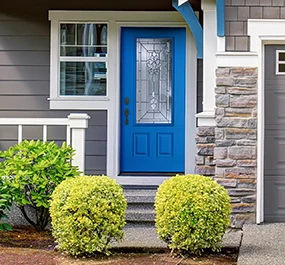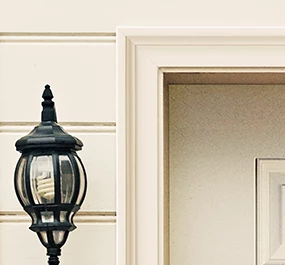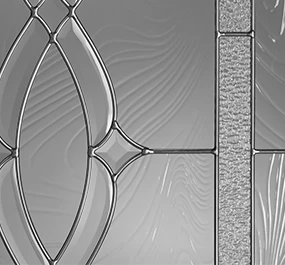Drafty doors can be a pain—both in terms of comfort and the impact on your energy bill. This is where exterior door weatherstripping comes in. Weatherstripping is the material around your door that prevents drafts from making their way into your home. Most commonly, this is placed on the outside of the door, but it can also be on the inside of the door—and should be placed inside in hurricane zones. While the idea of inspecting the weatherstripping on your exterior doors might sound complex, it’s really quite easy for anyone to evaluate, and it is important to maintain overall functionality.
Benefits of exterior door weatherstripping
Ensuring that your exterior door is properly sealed with weatherstripping can have many positive effects for your home. Some of the key benefits include:
Energy savings
Door drafts can account for up to 30-40% of energy loss in the home, which means exterior door weatherstripping can help homeowners save annually on their energy bill.
Home comfort
On the coldest days in winter, the last thing anyone wants to feel is a chilly draft sneaking into their home. Exterior door weatherstripping eliminates this problem, meaning you don’t need to escape to the warmest room in your home or spend additional money on under-the-door draft stoppers that will likely be less effective.
Deters pests
While this might not be one of the benefits commonly associated with weatherstripping, it’s one that all homeowners can appreciate. If you’ve ever struggled with ants and other small insects making their way into your home, any small gaps between your door and its frame could be the culprit.
Inspecting your weatherstripping
It’s recommended to inspect your exterior door’s weatherstripping at least once a year to check for any indication that air is leaking through. Like many other exterior components, weatherstripping is prone to damage from age, friction, and seasonal elements. To check whether your exterior door’s weatherstripping needs to be replaced, you’ll first need to check which kind of weatherstripping you already have—we have provided instructions for the three most common types.
Self-adhesive foam
If it’s time to replace your self-adhesive foam weatherstripping, the adhesive might be starting to lose its grip. Look for the foam pulling away from the edges of your door, losing its flexibility to spring back to fill the gaps, or falling off completely.
Rubber/vinyl
When inspecting rubber or vinyl weatherstripping, you’ll want to look for cracking or dryness, which generally indicates it is time to replace this type of weatherstripping.
Metal
This may be spring metal or stand-up metal weatherstripping. Issues with metal weatherstripping will show up as cracks in the metal strips, bending or warping, or pieces coming loose. Please note: if your inspection of metal weatherstripping reveals an issue, it is time to bring in a professional to resolve this—do not try to DIY repairing this type of weatherstripping.
If your inspection reveals problems with your weatherstripping, it is most likely time for a full replacement. While replacing your weatherstripping can be a simple process, we recommend consulting with a professional before starting a DIY project to ensure you will have the proper fit and get the best performance.
Prevent heat loss with an energy efficient door
New weatherstripping can go a long way in preventing heat loss and drafts, but sometimes more help is needed. That’s where energy efficient doors come into play. Paired with effective weatherstripping, energy efficient doors, like Plastpro’s lineup of ENERGY STAR Qualified fiberglass exterior doors, can greatly improve comfort and lower your energy bill.
Check out Plastpro’s Where to Buy page to find Plastpro’s energy efficient fiberglass exterior doors near you, and explore our how-to guides which cover a variety of home and door needs.



